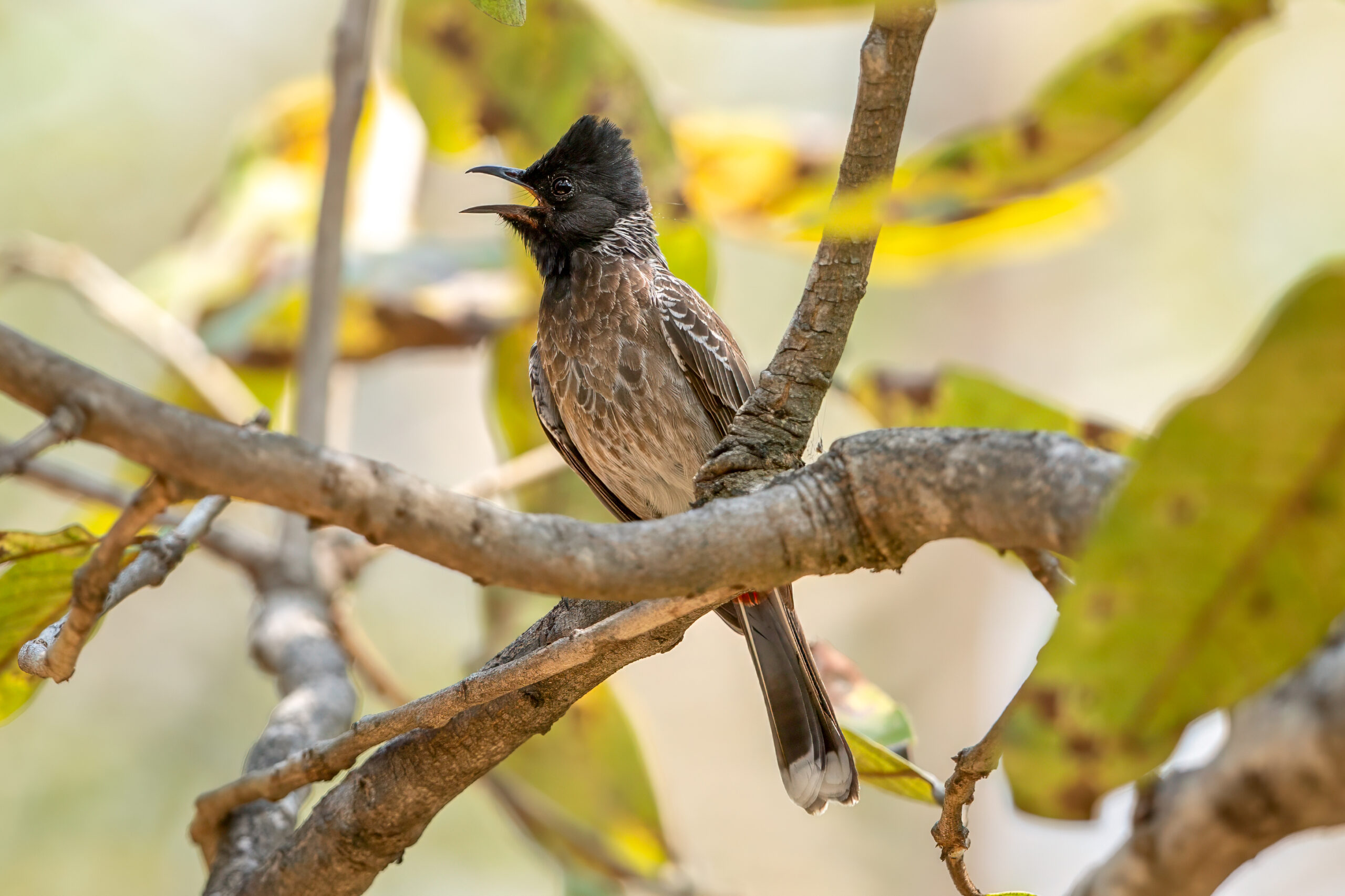Description
The common bulbul (Pycnonotus barbatus) is a common species of passerine bird found throughout sub-Saharan Africa. It is a conspicuous, chatty little bird with a length of 20 cm (8 in) and is the most common bird in the bulbul family in Africa. Head is dark brown to black with a distinct peak, upperparts are brown, and underparts are white to light brown on the chest. It is bright white or yellow underneath at the base of the tail, which differs between subspecies. The black bill has a slight curve to it.
Diet & habitat
Common bulbuls are found in a myriad of different habitats such as woodlands, thickets, forest edges, wetlands, mountain scrub, and urban landscapes such as gardens and parks. They are social birds and almost always found in small groups or in pairs. They have a broad diet and feed on fruits, seeds, petals, and nectar, as well as various invertebrates such as insects and spiders.
Nesting
The common bulbul is monogamous until the partner dies, and quite territorial. Males will viciously defend the territory from intruding males. The female builds the nest, which is often situated on a small branch or between twigs towards the end of the canopy. It is created in the shape of a small cup and made of dry grass and twigs, often with spider web in the outer layer. It is lined with finer plant material on the inside. Two or three eggs are laid and incubated by the female for 12-15 days while the male brings food. The female stays with the nest the first few days after hatching before she joins the male in search for food. The chicks stay in the nest for 11-16 days and then leave for the nearby branches before they can fully fly.
Status
The common bulbul is a very common species of bird, and is in some areas, particularly in gardens and parks, the most common species. It has adapted very well to human expansion and there are no threats to the species. It is listed as least concern on the IUCN Red List.







